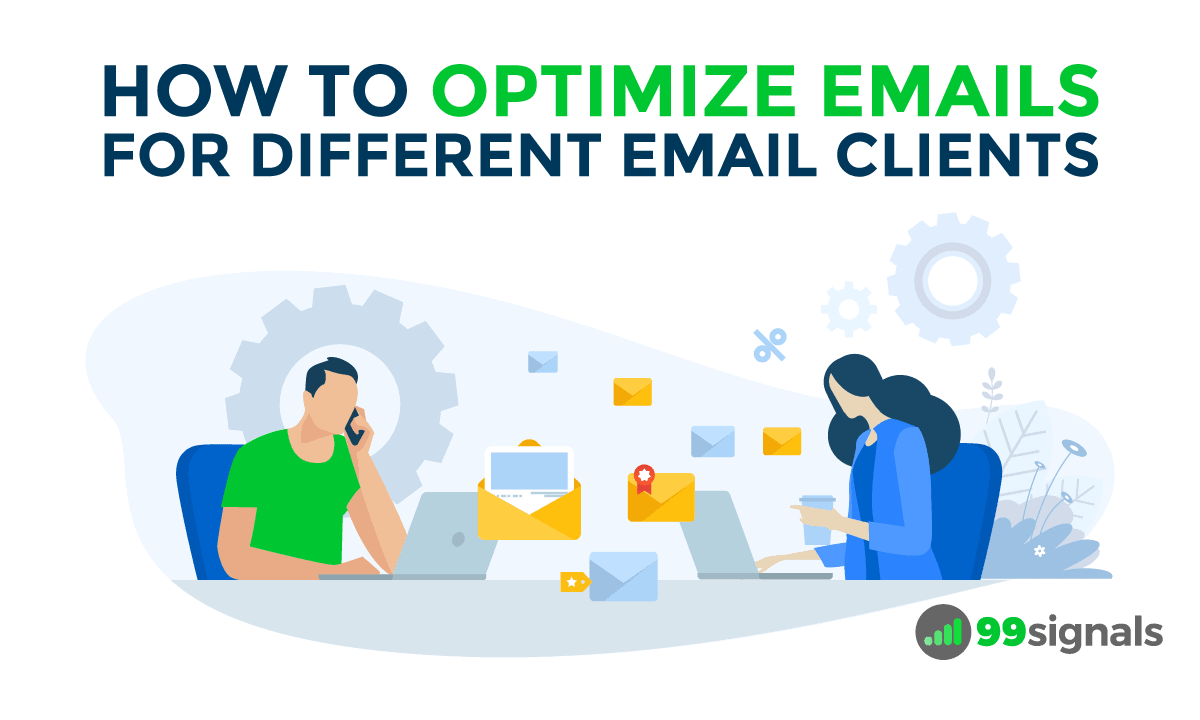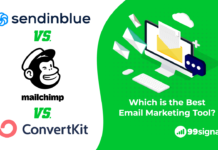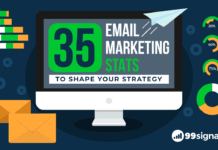
Successful email marketers make sure their emails are not just mobile-optimized, but also optimized for different email clients (Gmail, Outlook, Yahoo!, etc.).
In this article, we'll examine ways in which you can optimize your email campaigns for different email clients.
But before we get into that, let's take a quick look at the most popular email clients.
Table of Contents
- The Top 10 Most Popular Email Clients
- How to Optimize Your Emails for Different Email Clients
- 1. Create a Plain-Text Version of Your Email
- 2. Add Alt Text to Your Images
- 3. Set Your Preview Text
- 4. Set a Specific Height and Width for Your Images
- 5. Include a Link to the Web Version of Your Email
- 6. Make Sure Your Links Have Absolute Paths
- 7. Make Sure Your Image URLs Have Absolute Paths
- 8. Preview and Test Your Emails
The Top 10 Most Popular Email Clients
Naturally, some email clients are way more popular than others.
According to Litmus' research of 1.06 billion email opens, these are the 10 most popular email clients.
- Apple iPhone's Mail app (28% of users)
- Gmail (16% of users)
- Apple iPad's Mail app (11% of users)
- Google Android's Mail app (9% of users)
- Outlook (9% of users)
- Apple Mail desktop app (8% of users)
- Outlook.com (6% of users)
- Yahoo! Mail (4% of users)
- Windows Live Mail (2% of users)
- AOL Mail (1% of users)
Now that you know which are the most popular email clients and ones you should prioritize for your email campaigns, let's dive deeper into what you can do to ensure your emails are optimized for these email clients.
How to Optimize Your Emails for Different Email Clients
1. Create a Plain-Text Version of Your Email
An easy way to help ensure your emails make it into your subscribers' inboxes is by creating a plain-text version of all your emails.
Most email clients expect trustworthy emails to have both rich and plain-text email versions.
Most email marketing service providers (ESPs) let you create plain-text version of your email within their email editor. ESPs such as AWeber and ConvertKit automatically create a plain-text version of your email.
2. Add Alt Text to Your Images
Most email clients will block images by default. This means that when someone opens your email, the images won't load unless they opt to do so by clicking a button or changing their default settings.
Adding alt text to your images helps your subscribers understand your message even if they don't see the images.
Here's a chart from Campaign Monitor showing which email clients block images, render alt text, and render styled alt text.
Pro Tip: Optimizing the images on your site will not just get you more organic traffic, but it will also provide a better user experience for your readers. Here are 7 actionable Image SEO tips you can implement on your site right away.
3. Set Your Preview Text
Email clients like Gmail, Outlook, and the iPhone Mail app display the first few lines of text from the body of your email alongside the subject line.
As a result, the first few lines of text could be the deciding factor in whether the recipient opens your email or ignores it.
4. Set a Specific Height and Width for Your Images
Setting a specific height and width for your images will help ensure your email design maintains its structure even when images are blocked by email clients.
It also sets a container for your alt text in email clients that block images by default.
Most ESPs allow you to resize your images. Resize your images to the specific size you want them to be before sending the email.
5. Include a Link to the Web Version of Your Email
Some email clients don't support HTML, so it's important to include a link to an online/web version of your email.
Check out this list of what's supported across different email clients, including link elements, style elements, texts, etc.
Here's an email from Buffer which has an option to view the email in your browser.

By including a link to the web version of your email, your subscribers whose email client or device doesn't support HTML can still see your email the way it was meant to be seen.
6. Make Sure Your Links Have Absolute Paths
People will access your emails from different environments, so it's important that your links have absolute paths. If recipients are outside your company network, the relative links (when the link isn't a full website address) can break and make your content unavailable to view.
So, instead of a link like this:
<a href="index.html">Click here</a>
You can code the link like this:
<a href="http://www.mysite.com/index.html">Click here</a>
7. Make Sure Your Image URLs Have Absolute Paths
Similarly, make sure all your images have absolute URLs as well. Your subscribers won't be able to see the images in your email if they have relative paths.
So, instead of coding an image like this:
<img src="/images/photo.gif">
You would code it like this:
<img src="https://www.mysite.com/email/images/photo.gif">
8. Preview and Test Your Emails
Even if you think you've optimized your email for different email clients, it's always a good practice to preview and test your email before sending it.
Send out a test version of your email to different email clients, just to make sure they're working properly.
Related Articles





![SendFox Review: The Best Email Marketing Tool for Content Creators [Video + Article] SendFox Review](https://99signals.b-cdn.net/wp-content/uploads/2019/11/SendFox-Review-2019-218x150.png)







Thanks for the great tips above! I'm using the GetResponse autoresponder and these tips would sure come in handy: http://siangjunloh.ibi3g.com/getresponse
I actually never thought of the importance of thinking in terms of email clients. After reading the article, I'll definitely start implementing these recommendations. Although I have been using some of them already, it's better to go for more of them, if that means hitting the inbox of my leads, prospects and customers.
Thanks again.
[…] Email marketing isn’t just about creating a compelling copy and optimizing your subject line. Email deliverability plays a key role in the success of your email marketing campaigns. Successful email marketers make sure their emails are not just mobile-optimized, but also optimized for different email clients (Gmail, Outlook, Yahoo!, etc.). In this article, we’ll examine … […]